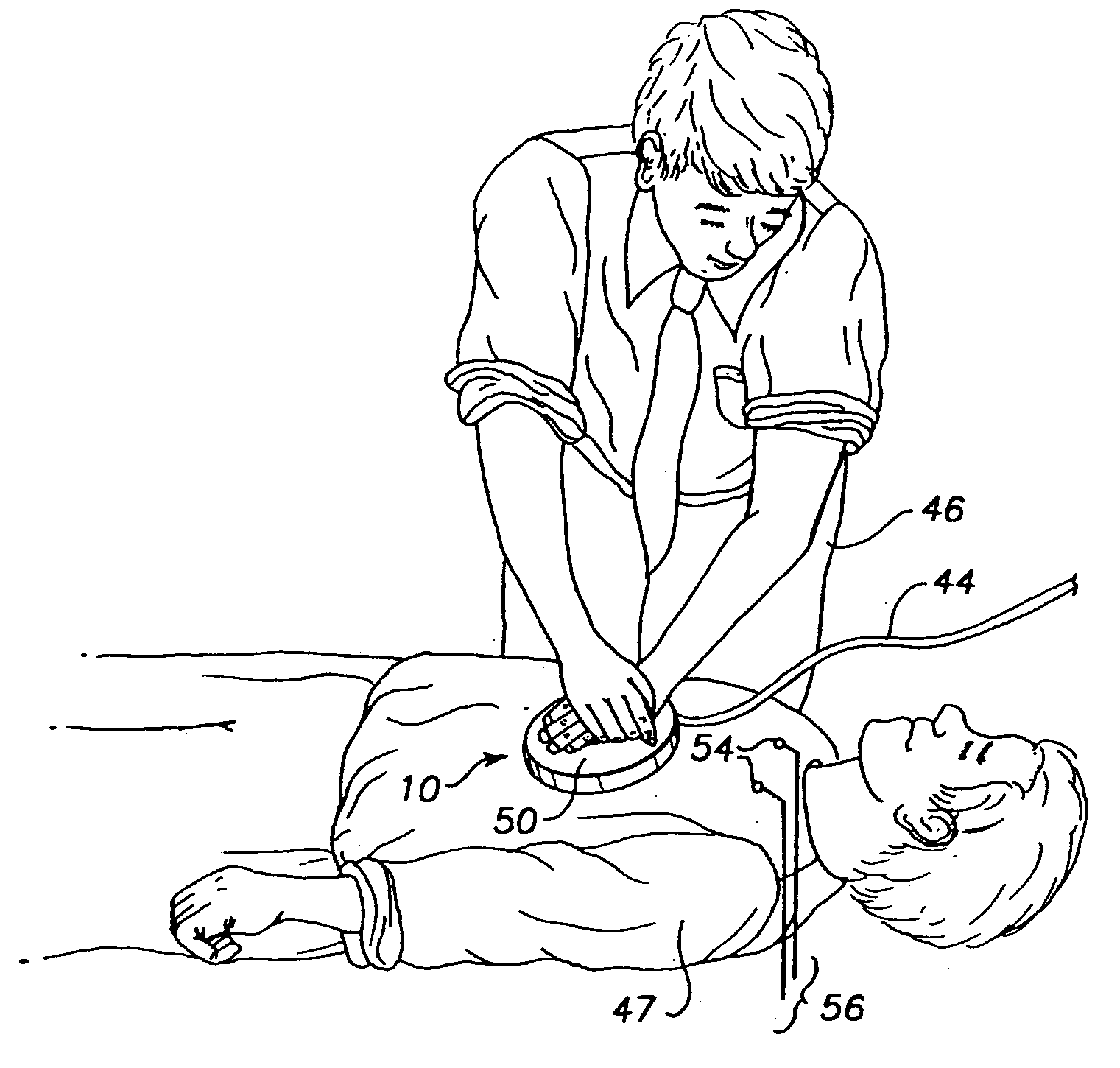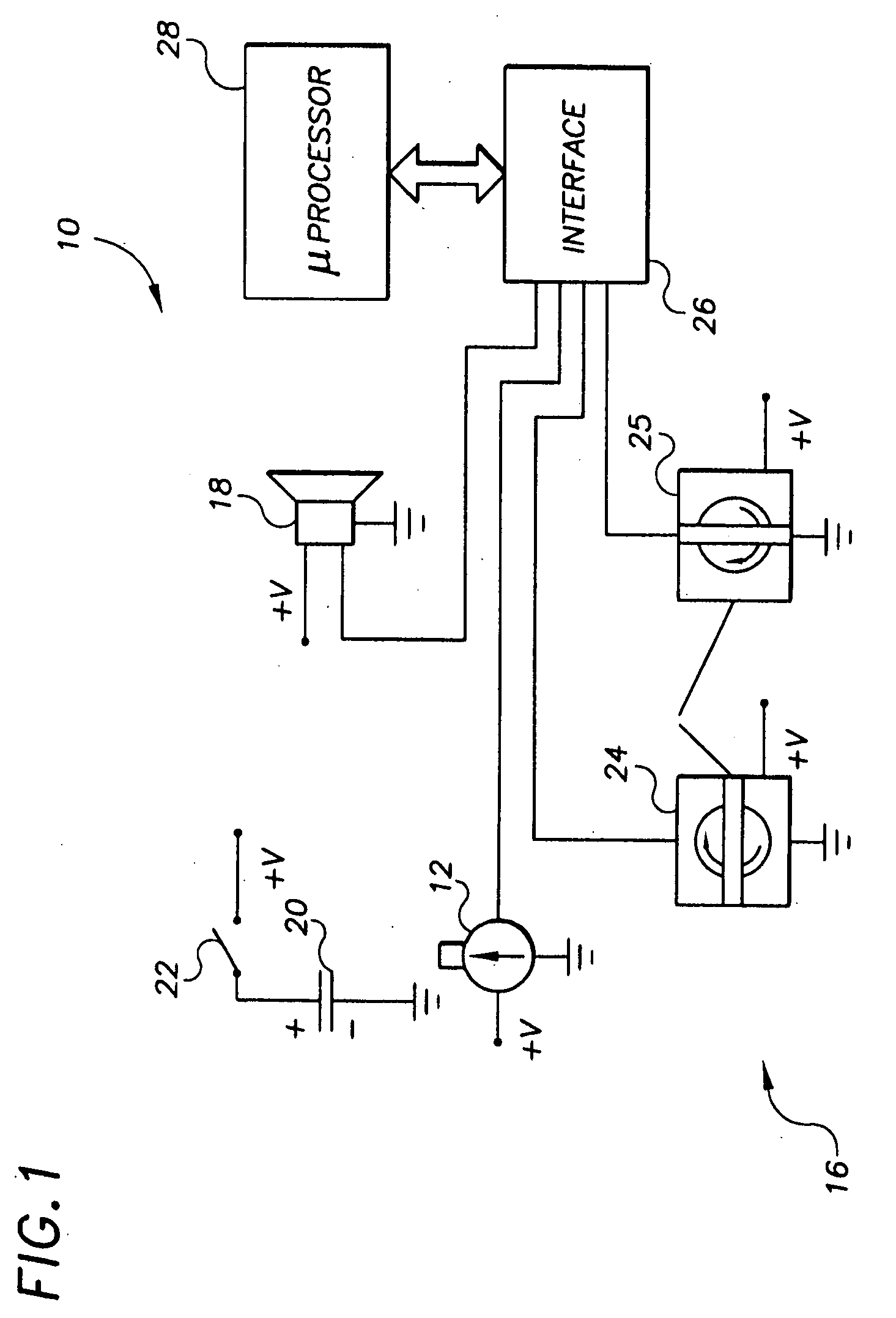ECG signal processor and method
a signal processor and signal processor technology, applied in the field of aiding the administration of cardiopulmonary resuscitation (cpr), can solve the problems of affecting the survival rate of patients, the importance of improving resuscitation techniques cannot be overestimated, and the success of current conventional cpr techniques introduced in 1960 has been limited both inside and outside the hospital, so as to facilitate the reading of ecg signal, suppress chest compression-induced artifacts, and facilitate heart rhythm reading
- Summary
- Abstract
- Description
- Claims
- Application Information
AI Technical Summary
Benefits of technology
Problems solved by technology
Method used
Image
Examples
Embodiment Construction
FIG. 1 is a schematic representation of a hand-held CPR chest compression monitor 10 for measuring the rate and depth of chest compressions during the administration of CPR. The monitor 10 is a specific implementation of a monitoring system for measuring and prompting chest compressions to facilitate the effective administration of cardiopulmonary resuscitation (CPR). The system comprises a displacement detector and a signaling mechanism. The displacement detector produces and outputs a displacement signal indicative of the displacement of a CPR recipient's chest toward the recipient's spine. The signaling mechanism provides chest compression indication signals directing a chest compression force applied to the chest and a frequency of compressions to bring and maintain the frequency and chest displacement parameters within desired ranges. The monitoring system may be further provided with a tilt compensator comprising a tilt sensor mechanism outputting a tilt compensation signal in...
PUM
 Login to View More
Login to View More Abstract
Description
Claims
Application Information
 Login to View More
Login to View More - R&D
- Intellectual Property
- Life Sciences
- Materials
- Tech Scout
- Unparalleled Data Quality
- Higher Quality Content
- 60% Fewer Hallucinations
Browse by: Latest US Patents, China's latest patents, Technical Efficacy Thesaurus, Application Domain, Technology Topic, Popular Technical Reports.
© 2025 PatSnap. All rights reserved.Legal|Privacy policy|Modern Slavery Act Transparency Statement|Sitemap|About US| Contact US: help@patsnap.com



